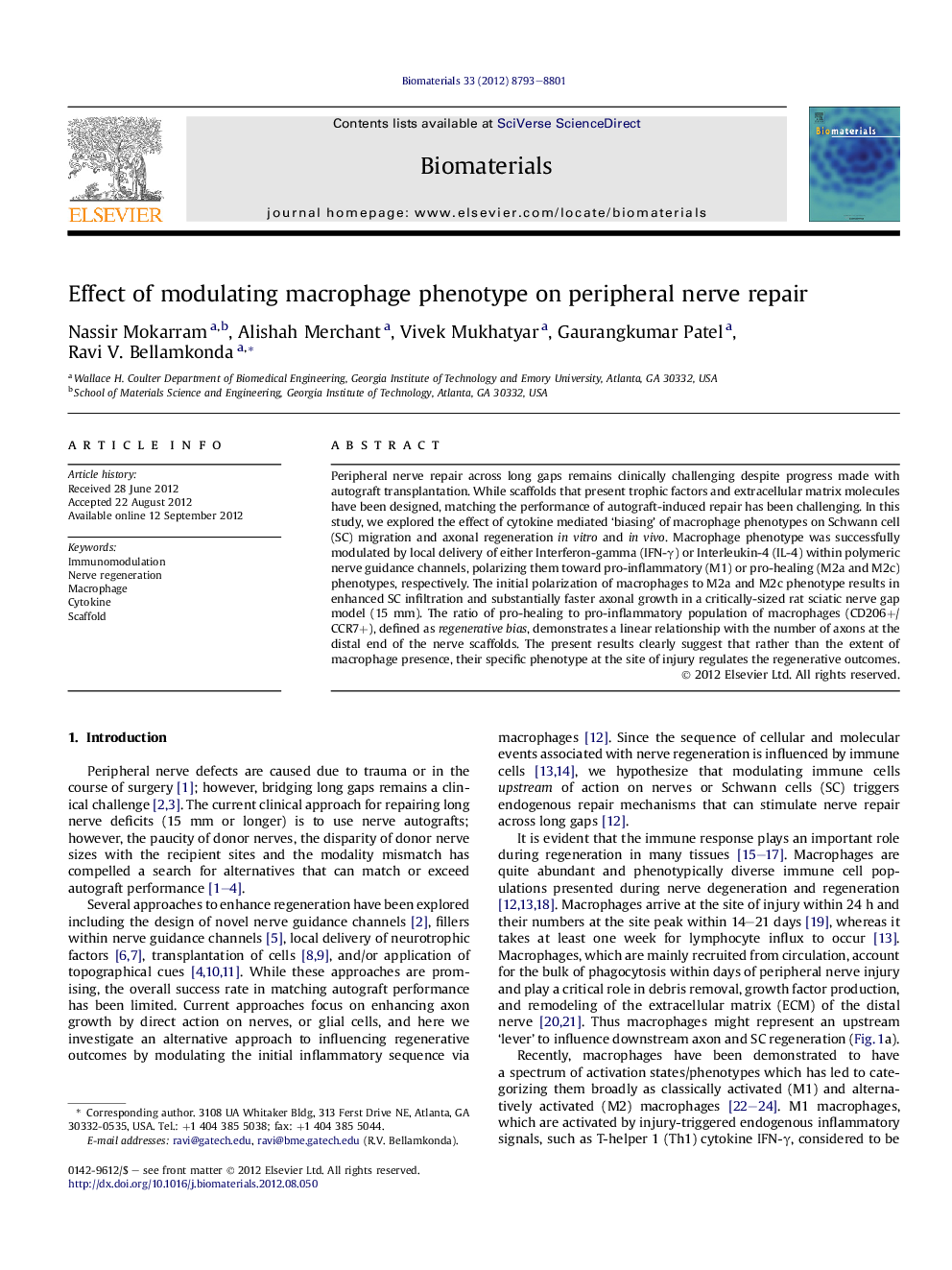| Article ID | Journal | Published Year | Pages | File Type |
|---|---|---|---|---|
| 7071 | Biomaterials | 2012 | 9 Pages |
Peripheral nerve repair across long gaps remains clinically challenging despite progress made with autograft transplantation. While scaffolds that present trophic factors and extracellular matrix molecules have been designed, matching the performance of autograft-induced repair has been challenging. In this study, we explored the effect of cytokine mediated ‘biasing’ of macrophage phenotypes on Schwann cell (SC) migration and axonal regeneration in vitro and in vivo. Macrophage phenotype was successfully modulated by local delivery of either Interferon-gamma (IFN-γ) or Interleukin-4 (IL-4) within polymeric nerve guidance channels, polarizing them toward pro-inflammatory (M1) or pro-healing (M2a and M2c) phenotypes, respectively. The initial polarization of macrophages to M2a and M2c phenotype results in enhanced SC infiltration and substantially faster axonal growth in a critically-sized rat sciatic nerve gap model (15 mm). The ratio of pro-healing to pro-inflammatory population of macrophages (CD206+/CCR7+), defined as regenerative bias, demonstrates a linear relationship with the number of axons at the distal end of the nerve scaffolds. The present results clearly suggest that rather than the extent of macrophage presence, their specific phenotype at the site of injury regulates the regenerative outcomes.
